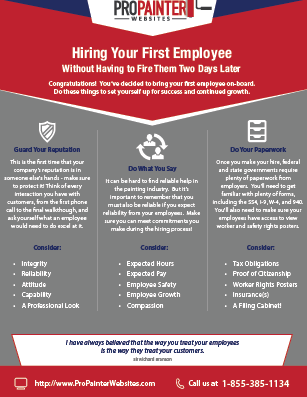Recognizing Seasonal Influences On Commercial Exterior Paint: Important Expertise For Success
Recognizing Seasonal Influences On Commercial Exterior Paint: Important Expertise For Success
Blog Article
Author-Fox Whalen
When you're planning an industrial outside paint project, seasonal elements can make or damage your results. You'll intend to take into consideration just how temperature level and humidity influence paint application and drying times. Selecting the ideal period can guarantee your paint sticks appropriately and lasts longer. However which periods are really the most effective for this type of work? Allow's explore the key elements that can affect your project's success.
The Effect of Temperature Level on Paint Application
When you're preparing an industrial exterior painting task, the temperature can considerably impact how well the paint sticks and dries out.
Ideally, you wish to paint when temperature levels vary between 50 ° F and 85 ° F. If it's as well cool, the paint may not cure effectively, bring about concerns like peeling or cracking.
On the other side, if it's too hot, the paint can dry too promptly, preventing correct bond and leading to an uneven finish.
You should additionally consider the moment of day; morning or late afternoon provides cooler temperature levels, which can be a lot more beneficial.
Constantly inspect the manufacturer's referrals for the certain paint you're using, as they usually offer assistance on the excellent temperature level range for optimal outcomes.
Moisture and Its Result on Drying Times
Temperature level isn't the only ecological factor that affects your commercial external paint task; humidity plays a significant duty as well. High humidity degrees can decrease drying times dramatically, affecting the total high quality of your paint job.
When the air is filled with wetness, the paint takes longer to treat, which can lead to problems like poor attachment and a higher danger of mold development. If you're repainting on a particularly humid day, be prepared for prolonged wait times in between coats.
It's critical to keep an eye on regional climate condition and plan accordingly. Ideally, go for humidity levels between 40% and 70% for optimum drying.
Keeping these factors in mind guarantees your job remains on track and delivers an enduring finish.
Best Seasons for Commercial Exterior Painting Projects
What's the best season for your commercial outside paint projects?
Springtime and very early fall are generally your best options. During deck commercial , temperatures are mild, and humidity levels are often lower, producing perfect problems for paint application and drying.
Stay clear of summertime's intense heat, which can create paint to completely dry also quickly, causing inadequate bond and surface. In a similar way, winter months's chilly temperatures can impede appropriate drying and curing, taking the chance of the longevity of your paint work.
Go for days with temperature levels in between 50 ° F and 85 ° F for optimum outcomes. Bear in mind to check the regional weather prediction for rainfall, as wet problems can ruin your task.
https://www.jpost.com/omg/article-730436 around these variables guarantees your paint task runs smoothly and lasts longer.
Conclusion
To conclude, intending your industrial outside painting tasks around seasonal factors to consider can make a considerable difference in the outcome. By organizing work throughout the ideal temperatures and moisture levels, you'll make certain far better attachment and drying times. Keep in mind to watch on regional weather forecasts and select the correct time of year-- springtime and early fall are your best options. Taking these steps will assist you attain a durable and expert finish that lasts.
